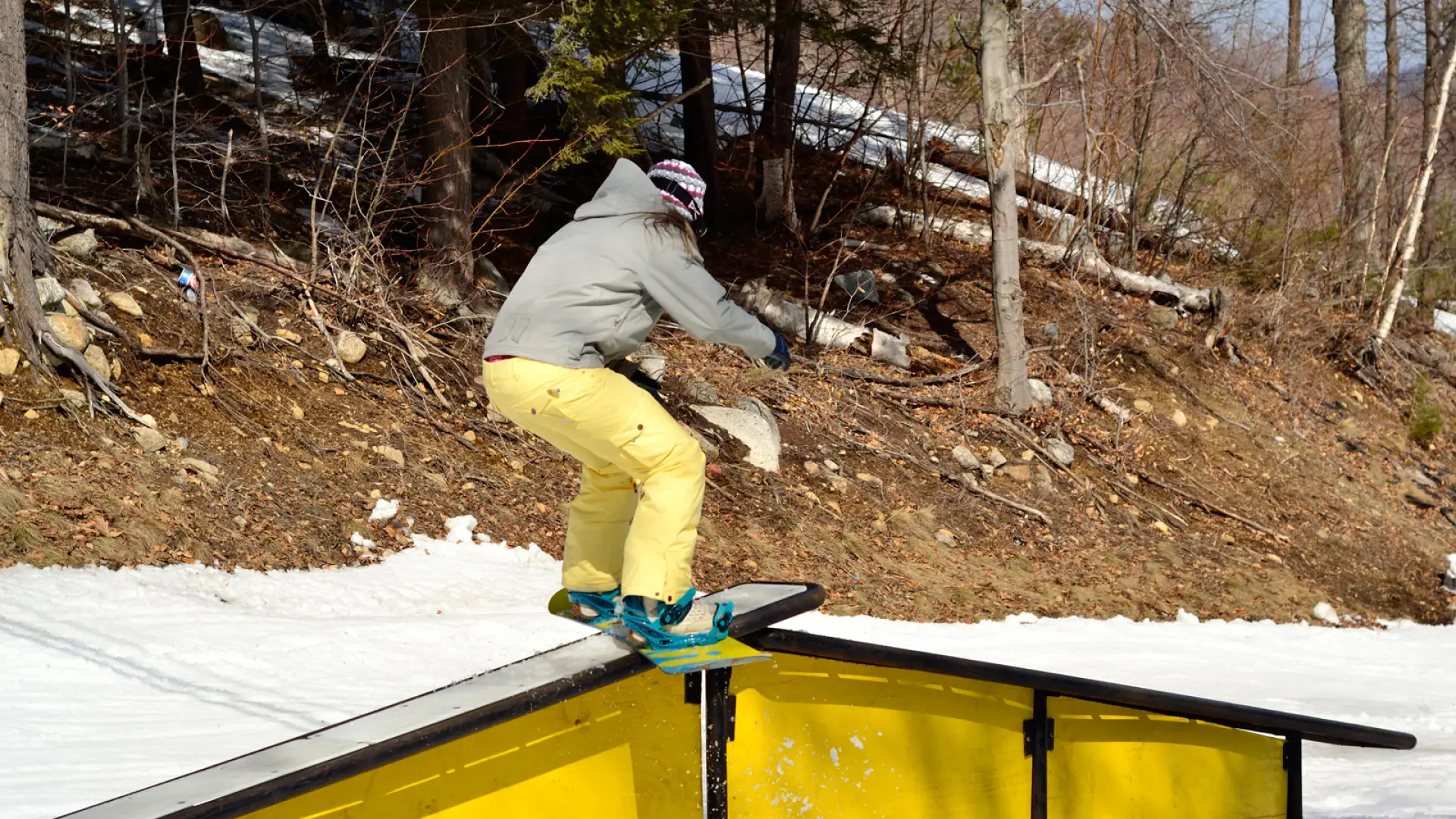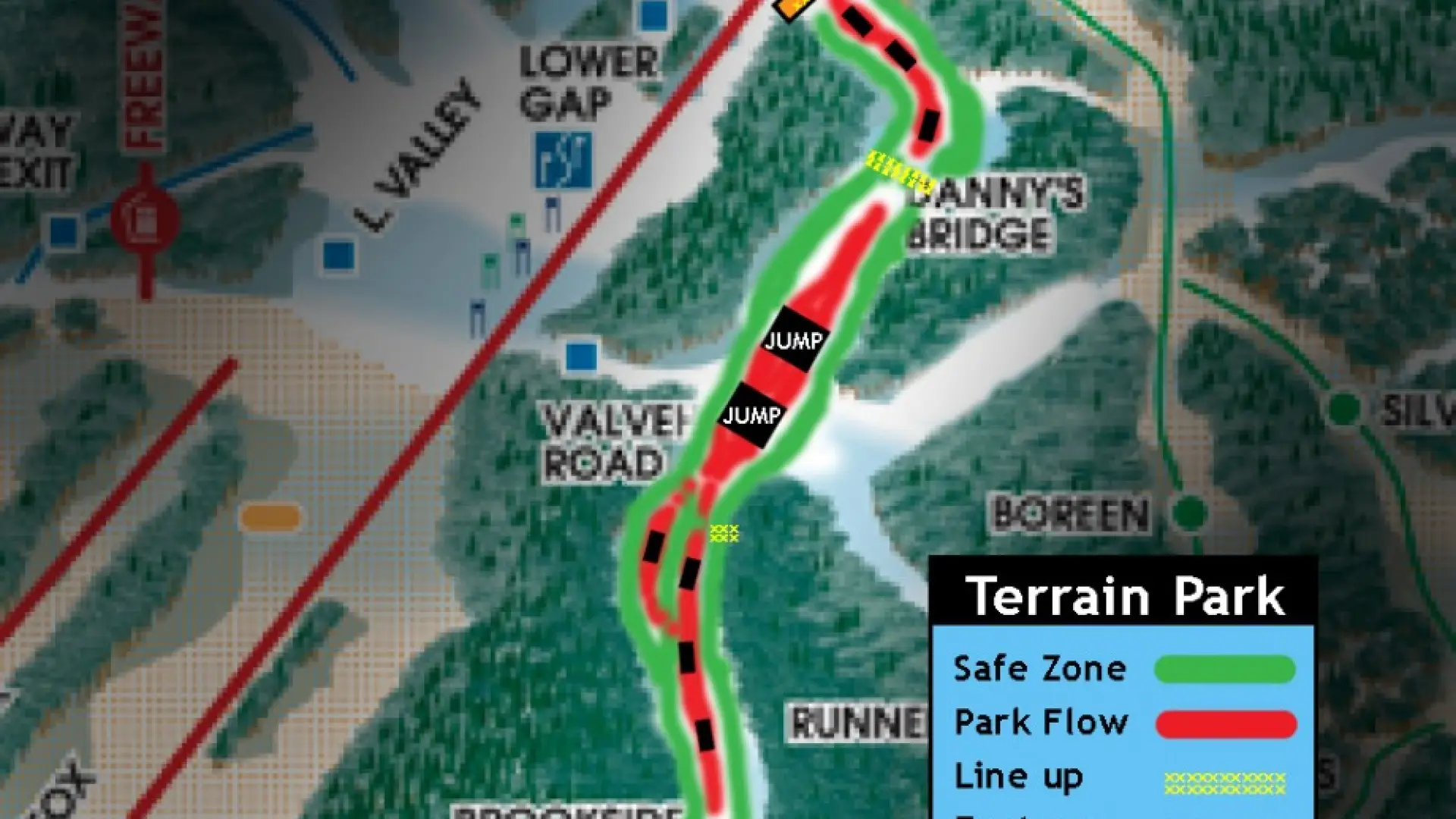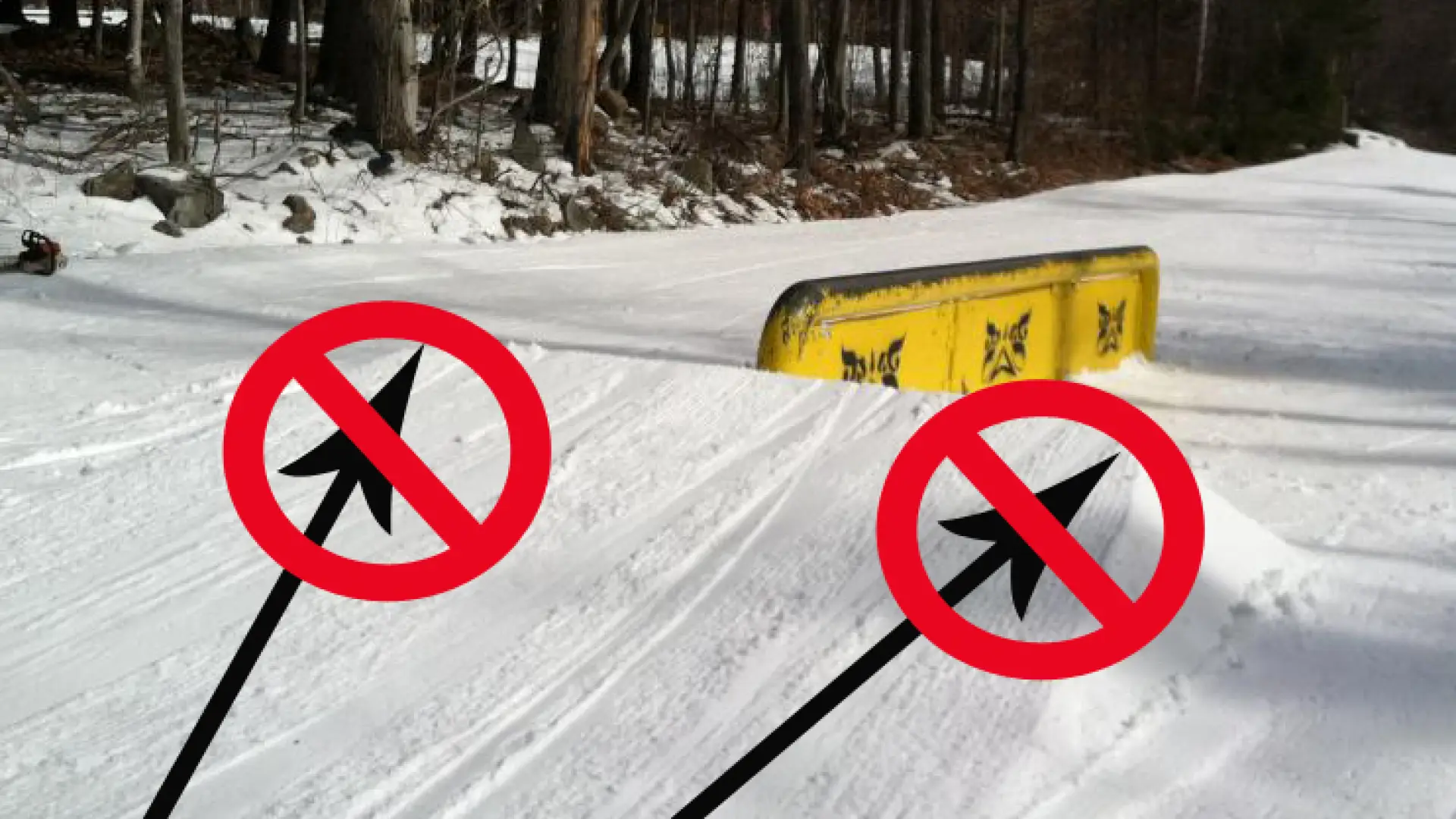Terrain Park Etiquette for Skiers and Riders at Whiteface Mountain

The main job of a Whiteface Mountain Terrain Park worker is to maintain safety in the Park. The day begins setting up fencing to indicate the entrance to the Terrain Park and using park tools (such as: rakes, shovels, etc.) to groom and shape the park features* so they are safe for use.
*A 'feature' is the term used for any jump, rail, box or jib object. (See examples below)

I hope to leave you with an understanding of park flow and safety. When you go through the terrain park note there is a flow to every park as the trail leads from feature to feature. It is important to pay attention to this flow, and it is often safest to stay to one side of the trail or the other to avoid cutting off skiers and riders as they make their way through the park. (See flow diagram below)

What a majority of people don't realize is that most of the park danger, is not the kids flying in the air over the 40-foot jumps, but the beginners to the park who may unknowingly sit or stand on landing hills, or may misuse feature hits by taking them as jumps (I'll explain this below).
Problem #1 in the park is the innocent bystander(s) being caught in the landing area – whether sitting, standing or crossing to the other side of the trail. This is extremely dangerous; many times skiers/riders can't see them until it's too late and are already in the air. Both people can be seriously injured, either by being landed on or by the jumper trying to change maneuvers to avoid hitting the other person.
Problem #2: The other park danger is using the hits, which are meant as an on-ramp for features such as boxes and rails, as small jumps (and this is difficult for people because they do look like little jumps). (See image below)

There are three potential issues with this:
- Hitting these transitions inappropriately as a jump usually sends the skier/rider off to the side of the trail (the safe ski zone) where unsuspecting skiers/riders can get hit.
- It breaks down the hit, putting grooves in the take off, etc., making it dangerous for skiers/riders trying to use the hit properly.
- The skier/rider misusing the hit runs the risk of injuring themselves by falling into the feature (rail or box, etc.) if something goes wrong with take off, if they fall or catch an edge.
Making your way through the park it is common to see several skiers and riders stopped at the top of a feature ("Line Up" see Park Flow diagram above). Proper etiquette is to take turns hitting the feature and it is important to make sure the last person to go makes it safely through the landing area before the next person goes. If it is not obvious who goes next it is common for a skier or rider to raise their hand and yell "dropping next," to take their claim as the next in line. Spotters, usually Park Crew employees, use signals to tell you when the jump is clear. Hands held in a big "O" over head is the sign for open and that the jump is clear, hands held in an "X" means there is a skier/rider down in the landing area or equipment in the way and it is unsafe to hit that feature.
Important things to remember:
The Whiteface Mountain Park Crew's number one job is to maintain safety in the terrain park. The best way to facilitate this usually results in employees having to yell across the trail to be heard... so the next time you are in the park and hear yelling, please listen to what the Park Crew employee is saying, it is for everyone's safety. That said, in the past as a park crew employee I've had to yell and I've watch other employees do the same - Park employees can sometimes comes across as rude; but please understand they are doing their job, and if you go over to them they are happy to explain and educate as to what went wrong. People make mistakes all day long in the park, it is a trail unlike any other on the mountain, I mean where else can you take a green/blue run and call it a black diamond?? The Park can always use advocates, so please help others who are new to the park understand correct etiquette.
Park Rules:
- Look before your jump – make sure the jump is safe and the landing is clear. If someone is on the jump – DO NOT hit it, wait until it is clear. When in doubt, look for spotters to let you know the landing is clear.
- Do NOT sit or stand on the jumps or landing hills. However note: Park Crew does as part of their job to maintain safety in the park. (You will see they stand out of danger's way.)
- The hits (transitions) in front of features (such as boxes and rails) are NOT jumps.
- Stay clear of take-off and landing areas, and watch for skiers/riders making their way through the park. This is the one place on the mountain where you need to be aware of the skiers/riders both above and below you.
- Wait for your turn to hit the feature, claim your spot as next in line by raising your hand and saying "dropping next".
- The Whiteface Mountain Park Crew is there to keep the trail safe, so listen to them.
Whiteface Mountain has varied terrain parks for both beginners and advanced alike, along with the mountain's 86 trails, there is truely something challenging for everyone at this mountain. Book a Whiteface Mountain's Ski and Ride Package and see what this New York Ski Area is all about!
This Weekend - Check out the First Whiteface Mountain Terrain Park Competition of the Season!
Rail Jam - this (Super) Sunday, Dec. 9th
Take advantage of Super Sunday lift ticket prices!!!
$40 Adult | $35 Teen | $30 Junior